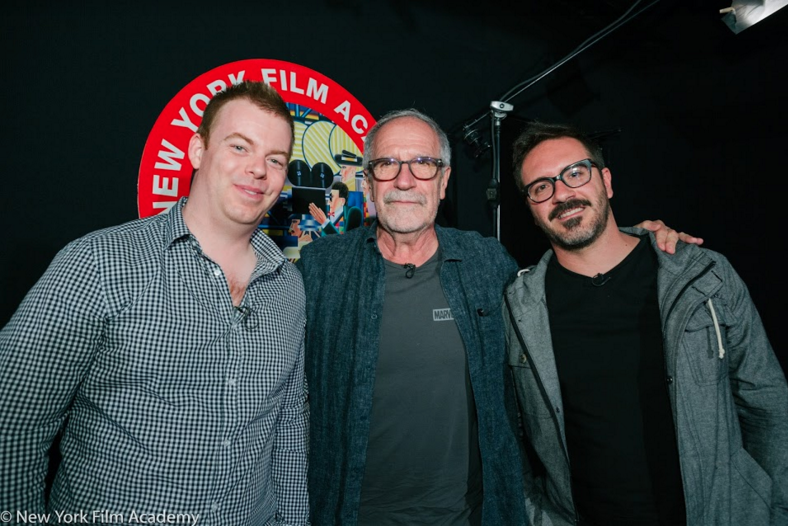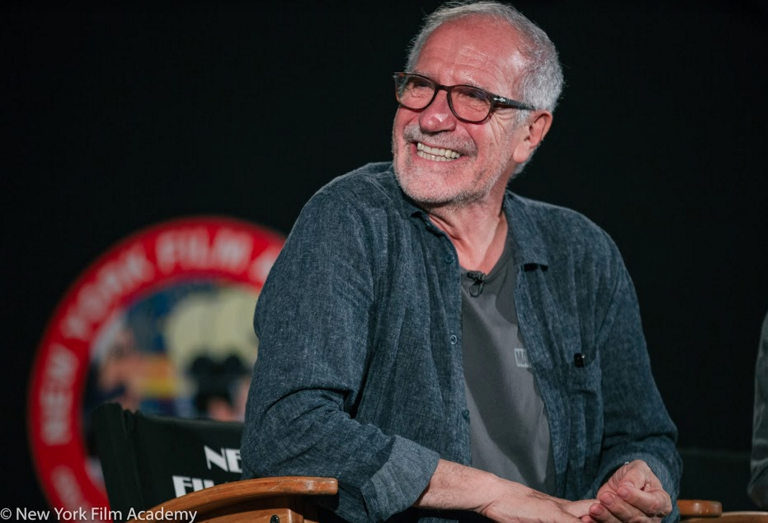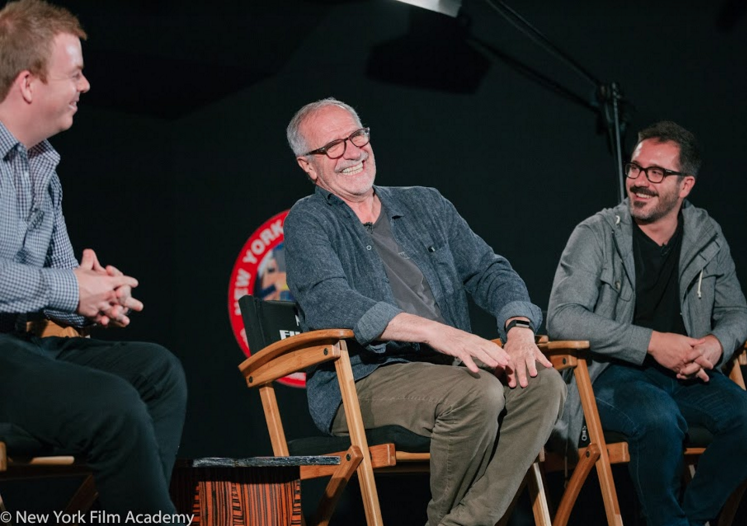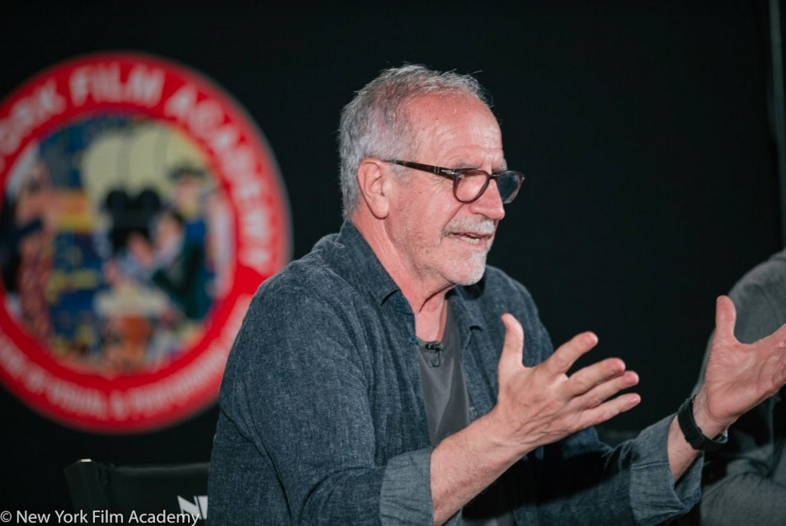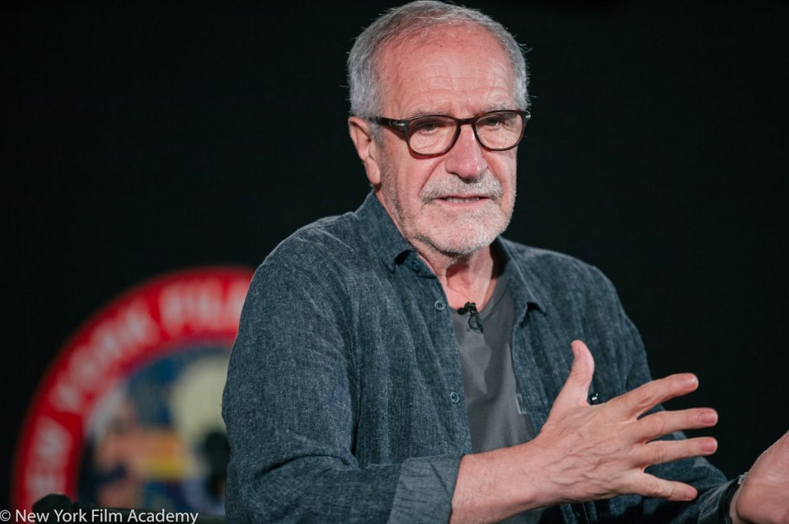On Tuesday, June 13, the New York Film Academy welcomed Javier Aguirresarobe to the Riverside Theater. His son, cinematographer Jon Aguirresarobe (“Hunter Gatherer”), was there to translate.
Aguirresarobe is a world-renowned director of photography known for his work on such great films like “The Others,” “Vicky Christina Barcelona,” “Blue Jasmine,” “Goya’s Ghosts,” and “The Promise.” So, why did he pick “The Road,” a film from 2005, to show the students?
Aguirresarobe shared that the book behind “The Road” was very special for him. He felt that telling this story was the perfect way to begin working in the United States. “The director (John Hillcoat) had already seen my movies at that time. So he thought I was the right one to do this movie, which he considered very special because it was the world after an apocalypse.”
“I asked the producer why they had picked me for the job,” Aguirresarobe said. “I could understand the director being interested, but what did the producers want me?” The producers responded that they wanted to do a more European-style movie.
The director and cinematographer agreed that they wanted a more “realistic vibe” than a typical American film. One way they tried to achieve that look was by removing the sun. “The lack of the sun in the movie is one of the most challenging aspects of the film,” shared Aguirresarobe. But the aesthetic helped create a sense of complete and utter doom that quickly enwraps the crowd.
At first, Aguirresarobe was extremely troubled by this obstacle. “I was worried because I knew what kind of movie I wanted to do, but I wasn’t sure if I would be able to do it.”
He studied American films that were shot in Mexico. A lot of them had day for night shots, and Aguirresarobe played around with this to figure out the algorithm. He discovered that, back in the day, filmmakers would burn big piles of gasoline in order to create thick black clouds that could block out the sun. This is no longer a legal option, but Aguirresarobe did pitch it to the director as a joke.
Aguirresarobe described himself as lucky to have pulled off the look. The time of year became a large factor in the shoot. The lack of greenery helped sell the idea of a dead Earth. “I wanted to respect the spirit of the book.”
Aguirresarobe also felt the lead actors helped cement the book’s spirit onto celluloid. “One of the best things in the movie is Viggo Mortensen. He went at the move with full energy. You can see all of that intensity on the screen.”
Aguirresarobe joked with students that he would share a few tips and tricks, but in the age of digital, they might seem historic. This did not deter anyone in the audience. One student asked, “Can you talk about how you did that marvelous close-up on Robert Duvall in that speech and the eyes … Was that done in camera or in post-production?”
Not missing a beat Aguirresarobe confirmed that the shot was done in camera. “Everything is done in camera. Duvall did have contact lenses to make it seem like he was blind.” Flame bars were used to get the look in the eyes. He said he learned a lot on those nights.
He began experimenting with real fire and the bars to create a better look. “Using the fire as a key light creates a horrible image. It creates a very intense red. The shadow gets very rough,” he said. So he would mix the natural and the artificial to create a natural look.
The New York Film Academy would like to thank both Jon and Javier Aguirresarobe for taking the time to speak with our students about their craft. Javier Aguirresarobe’s next film is Marvel’s “Thor: Ragnarok.”
